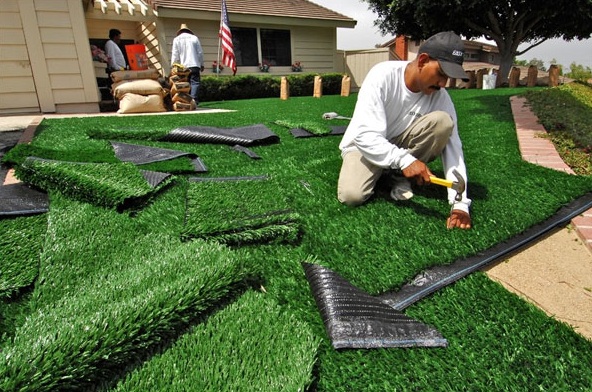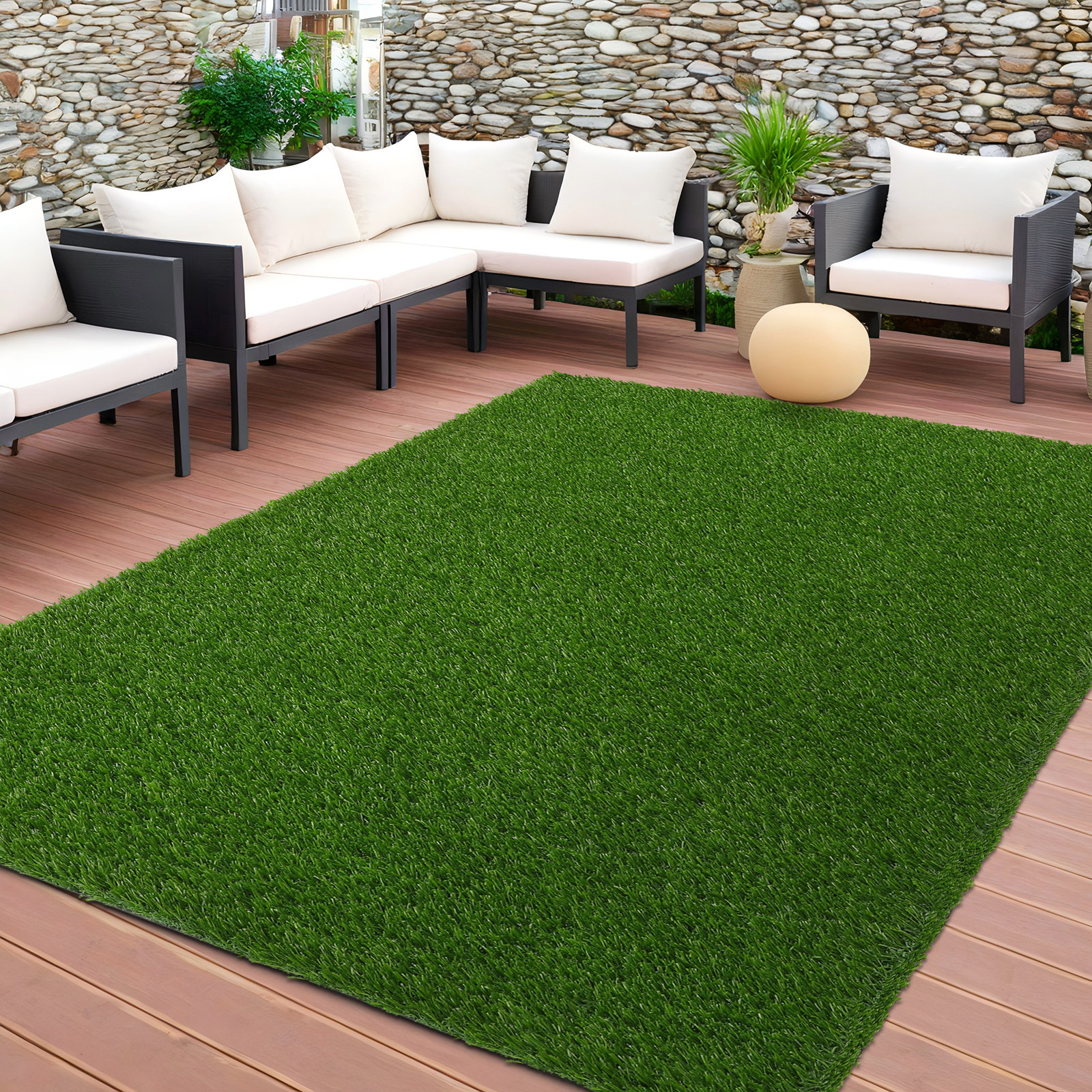Well-Known Artificial Turf Companies Phoenix for a Beautiful and Green Lawn
Well-Known Artificial Turf Companies Phoenix for a Beautiful and Green Lawn
Blog Article
Look Into the Environmental Benefits of Opting for Synthetic Grass Solutions
The fostering of man-made lawn remedies presents a compelling possibility to resolve pushing environmental challenges. By dramatically lowering water usage and reducing the application of unsafe chemicals, these options not just promote lasting landscaping but also shield regional communities. Furthermore, the reduced carbon impact connected with decreased upkeep activities adds to a much more sustainable technique to land management. Nonetheless, the effects of these advantages extend past simple conservation initiatives, questioning concerning their long-term influence on environment conservation and overall ecological equilibrium. Exploring these dimensions reveals a complex interaction worth thinking about.
Water Preservation Benefits
One of the most considerable benefits of synthetic grass is its capability to conserve water. In contrast, synthetic grass does not require watering, dramatically minimizing the overall need for water sources.
By getting rid of the requirement for regular watering, synthetic grass adds to lasting landscape practices and assists reduce the ecological influence of extreme water consumption. The conservation of water prolongs to the reduction of runoff, which can lead to soil disintegration and waterway contamination.
In addition, the installment of artificial grass allows house owners and municipalities to designate water sources much more successfully, concentrating on crucial usages such as drinking water and farming. The change towards artificial turf not only promotes accountable water use however additionally aligns with broader ecological goals intended at protecting natural deposits.
As areas significantly focus on sustainability, the water conservation benefits of synthetic grass provide an engaging instance for its fostering in domestic and commercial landscaping projects.
Minimized Chemical Use
The transition to synthetic grass considerably reduces the dependence on chemical treatments typically made use of in all-natural lawn upkeep. Traditional lawn administration typically includes the application of fertilizers, pesticides, and herbicides to advertise development and control parasites. These chemicals can position threats to human wellness, local wildlife, and the setting, adding to dirt and water contamination.
In comparison, fabricated grass gets rid of the need for these damaging substances. By reducing the release of synthetic compounds right into the ecological community, artificial grass advertises much healthier soil and water systems.
Furthermore, the absence of chemical runoff connected with man-made lawn installations assists shield neighborhood rivers from contamination, supporting marine life and preserving biodiversity. Arizona turf. As communities significantly focus on lasting techniques, choosing for artificial lawn provides a feasible remedy that aligns with ecological conservation goals. Via this change, homeowner can enjoy rich eco-friendly areas without endangering environmental wellness, leading the method for a more lasting future
Lower Carbon Footprint

Furthermore, the installation of synthetic grass can cause considerable water preservation. Natural lawns call for considerable amounts of water for irrigation, which not only includes in the carbon impact associated with water extraction and therapy but likewise pressures local water resources. In comparison, synthetic grass needs marginal maintenance, needing no watering, thus considerably reducing water use and its connected power prices.
Furthermore, the long life of synthetic grass adds to its reduced carbon impact. With a life expectancy of as much as 15 years or even more, the need for frequent replacements is decreased, leading to much less waste and reduced power intake in production and throwing away standard yard alternatives. Generally, synthetic grass offers a lasting option for ecologically conscious landscaping.
Habitat Preservation
Habitat preservation is a critical consideration in the discussion over landscaping selections, specifically when contrasting synthetic grass to natural turf. All-natural lawn lawns usually require extensive upkeep, consisting of the usage of chemicals, plant foods, and herbicides, which can adversely impact neighborhood ecological communities. These chemicals can seep into the soil and rivers, hurting native flora and fauna and disrupting local habitats.
In contrast, synthetic turf provides a chance to decrease the eco-friendly footprint of landscape design. By selecting artificial turf, home owners can lessen the disturbance of all-natural habitats related to typical yard care methods. Synthetic lawn gets rid of the requirement for dangerous chemicals, therefore protecting nearby wild animals and preserving the integrity of bordering communities. Moreover, the setup of man-made lawn can result in the conversion of previous yard areas right into more biodiverse landscapes, click resources such as pollinator gardens or native plant locations, which can support neighborhood wild animals.
Ultimately, the transition to artificial turf not just preserves water and minimizes maintenance efforts but also cultivates an extra unified partnership in between human activities and the native environment, advertising environment preservation while doing so.
Long-Term Sustainability
Long-term sustainability is a vital consider reviewing the benefits of synthetic grass over conventional turf yards. One of the most significant advantages of synthetic grass is its durability; it can last up to 15-20 years with marginal maintenance, whereas all-natural turf Recommended Reading requires constant reseeding and replacement. This long life minimizes the requirement for consistent resources, such as water, plant foods, and pesticides, which are important for maintaining a healthy and balanced grass yard.
In addition, synthetic grass adds to a decrease in carbon discharges linked with lawn care equipment. Typical lawns typically require gas-powered mowers, leaners, and blowers, all of which add to air pollution. Arizona artificial turf. On the other hand, man-made turf removes the requirement for such tools, promoting a cleaner atmosphere
Additionally, the production of synthetic grass progressively makes use of recycled products, improving its sustainability profile. As manufacturers take on green practices, the environmental footprint of man-made grass proceeds to diminish.

Conclusion
The adoption of synthetic lawn solutions presents significant environmental benefits, consisting of substantial water preservation, minimized reliance on dangerous chemicals, and a lower carbon footprint. Artificial grass help in protecting natural habitats by decreasing land disruption and promoting long-term sustainability via the use of durable products. Collectively, these aspects emphasize the capacity of synthetic lawn to add favorably to ecological health and offer a sensible choice to standard landscaping practices in a significantly resource-conscious globe.
In contrast, artificial lawn does not need watering, significantly lowering her latest blog the total demand for water sources. By reducing the launch of synthetic compounds into the ecosystem, man-made turf advertises healthier soil and water systems.
Furthermore, the installment of artificial lawn can result in considerable water preservation. In comparison, synthetic lawn needs very little upkeep, needing no watering, thereby dramatically decreasing water use and its linked energy prices.

Report this page